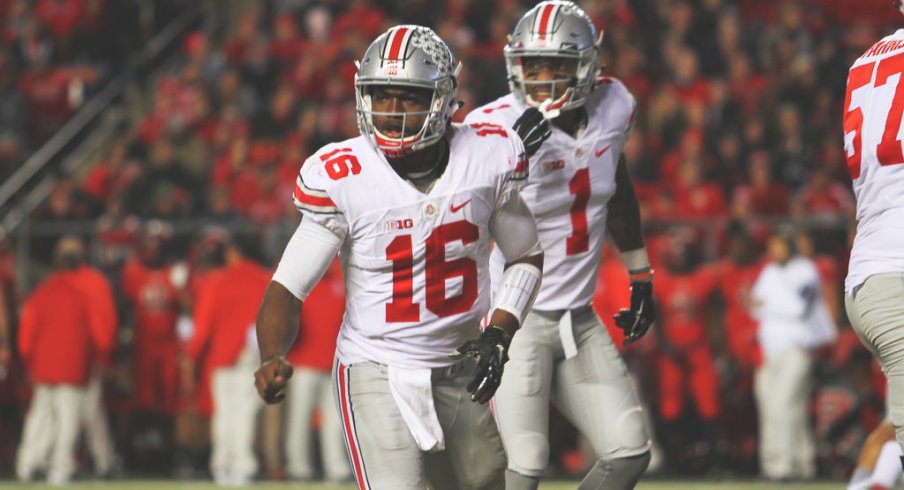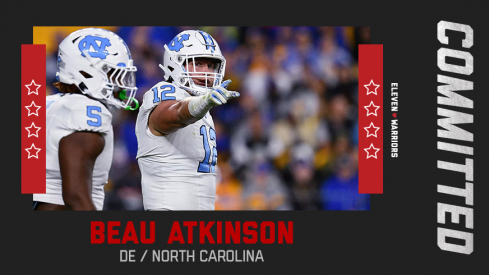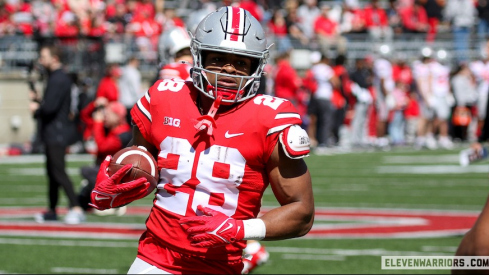For decades, football coaches have focused on the fact that the offense has a distinct advantage in that they know where they're going before the ball is snapped, in contrast to their opponents on the other side of the ball don't. Countless game-planning techniques have emerged in that time, seeing the T-formation give way to the Wishbone and Veer-Option systems, which would be replaced by West Coast passing games, followed by the gradual evolution into the various 'spread' offense principles that have taken over all levels of the game today.
As those spread formations took hold on the game though, another edge has emerged for offenses: the fact that they also know WHEN they are going, and an increasing desire to vary that timing. Until the past 10 years or so, the only way this advantage was utilized was with a varied snap count, often just trying to draw an opponent offsides by 'going on two.'
But as offensive formations have become more varied and spread out, defensive coaches have put a premium on the time they have between plays to make personnel and play-calling adjustments. Their side of the ball has had to schematically evolve at the same pace as the offenses they're trying to stop, meaning they can no longer simply line up the same way every play and hope to react.
To counter this evolution, most NFL offenses have become even more complex, inserting more formations and concepts in hopes of isolating personnel mismatches in their favor. At the college level, where practice time is at a premium, many teams have opted to go in a different direction, focusing on expanding their advantage of knowing WHEN they're snapping the ball at the expense of adding more options of WHERE they could go.
As such, coaches like Urban Meyer, Hugh Freeze, and Gus Malzahn (who wrote a book about it) have fully adopted the idea of going uptempo between plays, looking to snap the ball quickly from one play to the next. Of course, they're simply following the model laid out by two coaches that made the philosophy famous: Rich Rodriguez and Chip Kelly.
Rodriguez came to prominence while at West Virginia, where his Mountaineer offenses set the college football world on fire in the mid-2000s, consistently upsetting highly-ranked opponents like Miami, Georgia, and Virginia Tech that featured far more talent. His less-than-successful tenure at Michigan seemed to poke holes in his uptempo philosophy, but Rodriguez has found success with it again after returning to the sidelines at the University of Arizona.
At the same time Rodriguez was struggling in Ann Arbor, Kelly was crashing the national spotlight with a nearly identical offense at the University of Oregon, peaking with a BCS title game appearance in 2011 against an Auburn offense coached by none other than Malzahn. After taking his philosophy to the Philadelphia Eagles, Kelly was fired after a three-year stint that saw him win 10 games twice, including a division title in 2013. While many saw his firing as an indictment on the philosophy at that level, Kelly's Eagle offense were statistically at their best when operating with no huddle, prompting the San Francisco 49ers to give him (and his offense) another chance.
Such an uptempo, no-huddle philosophy allows an offense to maximize their advantage of controlling the game's pace in a number of ways:
- Alignment: The most obvious advantage, as defenses often fail to communicate their play-call and line up before the ball is snapped when offenses go quickly.
- Personnel: If the offense does not huddle or substitute any players, the referees will not wait for the defense to do so, meaning the offense can maximize any mismatch they identify as long as the clock doesn't stop.
- Simplified schemes: As a byproduct of the two previous points, defenses often call their most basic fronts and coverages in hopes of better communication and execution. According to a 2015 X and O Labs survey of over 1,000 coaches, this was the top reason for implementing an uptempo system.
- Conditioning: If you know you're going to be running plays at a high tempo, you can train all year-round to do so effectively, whereas your opponent may not. Instead of thinking about where they need to be on every play, the defense will focus on when their next rest break is coming.
While simply going faster between plays can amplify these advantages, defenses will acclimate to any speed over time. Instead, the key to maximizing these benefits is a variance in tempo. As such, most college offenses often switch between three different speeds when going no-huddle.
Most coaches have their own unique naming convention for these speeds, many of which are related to driving, such as Freeze's method of correlating his team's speeds to different NASCAR race tracks. The most common (and simple) method follows the Green-Yellow-Red (Fast-Medium-Slow) sequence of a traffic light.
When going at top speed, offenses try to simply line up and snap the ball as quickly as possible. To do so, they'll stay in the same formation, often running the same play, as the Buckeyes did with a simple inside zone-read play for three consecutive snaps below.
As we can see, the Buckeyes hurry as quickly as possible to the line, knowing that they're simply running the same play thanks to the signals coming from the sideline and quarterback J.T. Barrett. With the exception of the first play in the series, which came after the officials had reset the chains, the Buckeyes got each of the following plays off in 13 seconds of real time, including the final snap which came almost instantly after the officials began winding the play clock.
The next speed (Yellow) looks similar to the naked eye, as the Buckeyes are still appearing to snap the ball as quickly as possible. However they're changing formation and allowing for an occasional personnel change if need be.
While not quite as fast as the 'Green' tempo, the Buckeyes are still able to snap the ball in 14 and 17 seconds respectively in the below clip.
The final speed (Red) is quite common for uptempo teams, as the offense is only attempting to appear as though they're running one of the above speeds before pausing to look at the sideline. As the offense rushes to line up, the defense is forced to rush their play-call in from the sidelines before finding their own alignment.
However, once the offense has lined up, they'll pause and look to the sideline where the coaching staff, often with a great deal of help from the booth upstairs, will signal in a play based on the defense's alignment. As stated above, the defense is often running something basic to make up for the lack of time, meaning the offense should be able to easily identify what's coming.
As we can see though, giving good teams at the college level this much time allows them to make adjustments of their own. One of the benefits of that simplified scheme coaches so value from going uptempo is a general lack of blitzing from the defense. But with the extra time afforded in this 'Red' tempo, the defense is able to look to their sideline and call in a corner blitz that results in a sack.
Obviously, it takes more than just a quick snap to make an uptempo offense successful. Any coach running such a system focus every single practice on three key areas that are absolutely vital to making their version work:
- Play-calling
- Communication
- Execution
Football players aren't programmable, and teaching them to properly and consistently execute isn't easy. To do so, teams focus heavily on the other two areas, which is why we'll look at how college teams approach those challenges next week.


